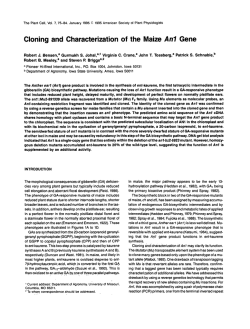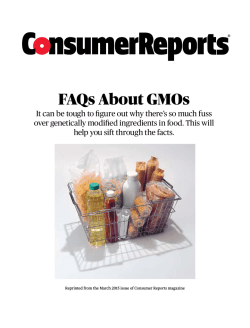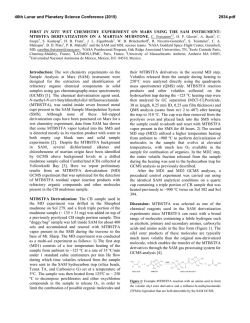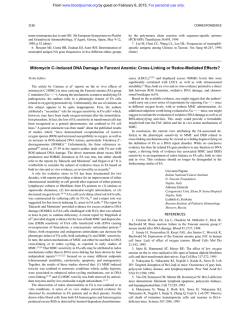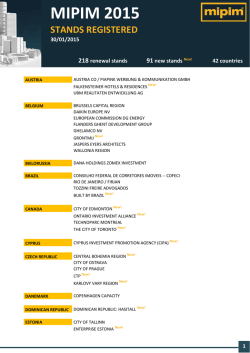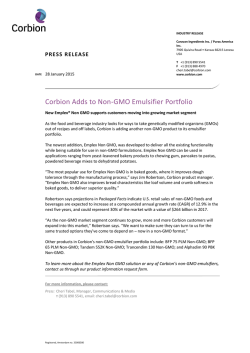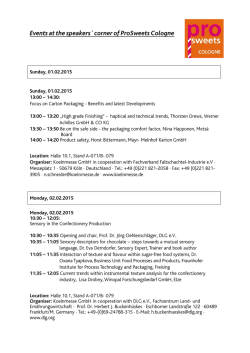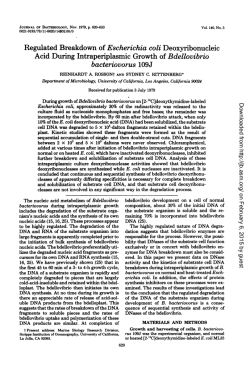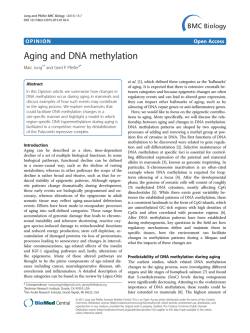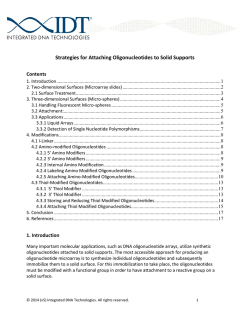
Untitled
Page: 1 of 2 Customer No.: 2500 Date: 28.01.2015 Test Report No. 1 Test Order: GMO analysis - 5er screening + plant-IDs – qualitative Receipt of sample: 19.01.2015, begin of analysis: 19.01.2015, end of analysis: 20.01.2015 Sample description: Bees protein feed of FeedBee, Apipowder and water, sample code: without, quantity: approx. 1130g (including packing) 5er-screening (35S, NOS, epsps-, pat-, bar-Gen) + plant IDs Sampling was carried out by the customer who is responsible for representativeness and logistics. Packing of the sample: The sample was intact; there were no signs of manipulation. Result Screening Plant IDs Reference genes 35S-promoter NOS-terminator epsps-gene pat-gene bar-gene Maize Soy Canola Mustard detected detected detected detected not detected genetic patterns confirmed genetic patterns confirmed genetic patterns not confirmed genetic patterns confirmed universal reference gene detected In the sample the detection of the sequence corresponding to 35S-promoter is positive, to NOSterminator is positive, to epsps-gene is positive, to pat-gene is positive and to bar-gene is negative. The detection of the universal reference gene demonstrates the presence of DNA in the sample which can be amplified. Responsible for the content: Dr. Rösel Illertissen, ............................... ................................................................. Dr. S. Rösel, Dr. K. Neumann: laboratory director; Dr. E. Nüßeler: laboratory vice-director; J. Kühnemann: senior specialist GMO analyses – detection of genetically modified DNA Using Real Time PCR (polymerase chain reaction) DNA sequences of the genetic material which are frequently used in genetically modified plants can be detected. In order to prove the informational value of the PCR, an additional reference gene is analysed. This is a gene that is also found in not genetically modified plants. Method of analysis: Homogenization of solid samples: The amount shown in the sample description is milled and homogenized. 200 mg up to 2500 mg of the material are analysed. Analysis was done as triple extraction. DNA extraction method: The DNA is extracted using standard molecular biological methods (according to DIN EN ISO 21571:2005). Qualitative determination of 35S, NOS (LP-P-01-41 2014-09), epsps- (LP-P-01-50 2011-04), pat(LP-P-01-51 2011-04) and bar-gene (LP-P-01-50 2011-04): The analysis is done according to ASU L 00.00 122 and on the basis of the international valid standards DIN EN ISO 24276:2006 as well as DIN EN ISO 21570:2005 using Real Time PCR (45 cycles), and different publicly available publications. The sequence of 35S-promotor originates from the Cauliflower Mosaic Virus (CaMV) and can be found for ® example in Roundup Ready -Soy and in several GM maize and canola events. This test does not differentiate if the 35S promoter originates from one or more GMO plants or rather from the CaMV (cauliflower mosaic virus). The sequence of the NOS-terminator (Nopalin Synthase Terminator) originates from Agrobacterium tumefaciens, and is found amongst others in Roundup Ready®-Soy as well as in several GM maize and canola events. epsps-gene: imparts tolerance towards the herbicide Roundup ® Ready (as in the GM-canola event GT73 or in the maize event MON88017), detection of CTP2CP4epsps-construct. pat-gene: imparts a tolerance towards the herbicide BASTA, doing so amongst others in GM-canola event Topas 19/2, Falcon GS4090 or maize event T25, detection of pCaMV35S-patconstruct. bar-gene: imparts a tolerance towards the herbicide BASTA, e.g. in the GM-canola events MS8 and RF3 or the GM-maize event Bt176. Controls and reference material: In each analysis positive and negative controls were used. The negative control does not contain DNA and serves to demonstrate the lack of contaminations. Limit of detection (LOD): < 0,01% in raw materials. The limit of detection also depends on the kind of sample matrix. Interpretation: Qualitative Real Time-PCR (LP-P-02-07 2004-10) The results of analyses done by lifeprint GmbH apply exclusively to the actually analyzed part of sample sent by the customer. They do not have to be representative for the whole product / good, from which the sample was taken out by the customer. The accreditation is exclusively valid for the test methods mentioned in the annex of the certificate of accreditation. Lifeprint GmbH excludes any liability for direct or indirect damages in respect to the performed analysis. None of the test reports might be replicated, not even in parts or any other form (by copies, micro films etc.) or distributed externally by using electronic systems. The test report is for the exclusive use of the customer. In addition our General Terms and Conditions are apply. Page 2 of 2 Page: 1 of 2 Customer No.: 2500 Date: 28.01.2015 Test Report No. 2 Test Order: GMO analysis - plant-IDs – qualitative Further test to test report 200840992 Receipt of sample: 19.01.2015, begin of analysis: 19.01.2015, end of analysis: 21.01.2015 Sample description: Bees protein feed of FeedBee, Apipowder and water, sample code: without, quantity: aprox. 1130g (including packing) Plant IDs Sampling was carried out by the customer who is responsible for representativeness and logistics. Packing of the sample: The sample was intact; there were no signs of manipulation. Result Plant IDs Wheat Alfalfa (Lucerne) Rice Potato Brassicaceen Sugar beet Cotton genetic pattern confirmed * genetic pattern confirmed * genetic pattern confirmed * genetic pattern confirmed * genetic pattern confirmed * not detected not detected Reference genes universal reference gene detected In the sample the detection of the genetic patterns for above mentioned parameters excluding sugar beet and cotton were confirmed. The detection of the universal reference gene demonstrates the presence of DNA in the sample which can be amplified. *Evaluation: The raw data during the identification point to findings of traces. Responsible for the content: Dr. Rösel Illertissen, ............................... ................................................................. Dr. S. Rösel, Dr. K. Neumann: laboratory director; Dr. E. Nüßeler: laboratory vice-director; J. Kühnemann: senior specialist GMO analyses – detection of genetically modified DNA Using Real Time PCR (polymerase chain reaction) DNA sequences of the genetic material which are frequently used in genetically modified plants can be detected. In order to prove the informational value of the PCR, an additional reference gene is analysed. This is a gene that is also found in not genetically modified plants. Method of analysis: Homogenization of solid samples: The amount shown in the sample description is milled and homogenized. 200 mg up to 2500 mg of the material are analysed. All analyses are done as double extraction. DNA extraction method: The DNA is extracted using standard molecular biological methods (according to DIN EN ISO 21571:2005). Qualitative determination of cotton (LP-P-04-06 2007-12); wheat (LP-P-04-37 2014-02); Alfalfa (LP-P04-34 2013-11); rice (LP-P-04-07 2006-09) and sugar beet (LP-P-04-08 2004-08), potato (LP-P-04-05 2008-02) and Brassicaceen (LP-P-04-03 2002-03): The analysis is done according to ASU L 00.00 122 and on the basis of the international valid standards DIN EN ISO 24276:2006 as well as DIN EN ISO 21570:2005 using Real Time PCR (45 cycles), and different publicly available publications. The detection of the respective species-specific genes shows the presence of this plant. A statement if the sample contains genetically modified components is not done by this analysis. Controls and reference material: In each analysis positive and negative controls were used. The negative control does not contain DNA and serves to demonstrate the lack of contaminations. Limit of detection (LOD): < 0,01% in raw materials. The limit of detection also depends on the kind of sample matrix. Interpretation: Qualitative Real Time-PCR (LP-P-02-07 2004-10) The results of analyses done by lifeprint GmbH apply exclusively to the actually analyzed part of sample sent by the customer. They do not have to be representative for the whole product / good, from which the sample was taken out by the customer. The accreditation is exclusively valid for the test methods mentioned in the annex of the certificate of accreditation. Lifeprint GmbH excludes any liability for direct or indirect damages in respect to the performed analysis. None of the test reports might be replicated, not even in parts or any other form (by copies, micro films etc.) or distributed externally by using electronic systems. The test report is for the exclusive use of the customer. In addition our General Terms and Conditions are apply. Page 2 of 2 Page: Customer No.: Date: 1 of 2 2500 28.01.2015 Test Report No. 3 Test Order: GMO analysis – soy variety IDs – qualitative Further test to test report no. 200840992 Receipt of sample: 19.01.2015, begin of analysis: 19.01.2015, end of analysis: 21.01.2015 Sample description: Bees protein feed of FeedBee, Apipowder and water, sample code: without, quantity: aprox. 1130g (including packing) Soy variety IDs Sampling was carried out by the customer who is responsible for representativeness and logistics. Packing of the sample: The sample was intact, there were no signs of manipulation. Result Soy GTS-40-3-2 (RRS-1) detected detected not detected not detected not detected not detected not detected not detected not detected Reference gene MON89788 (RRS-2) FG72 CV127 305423 MON87705 MON87708 A2704 A5547 soy specific reference gene detected * In the sample the detection of the sequence corresponding to GTS-40-3-2 and MON89788 is positive. The detection of the soy specific reference gene demonstrates the presence of DNA in the sample which can be amplified. * Evaluation: The sample contains relatively few soy specific DNA sequences. This indicates comparatively low soy contents. Responsible for the content: Dr. Rösel Illertissen,............................... ................................................................. Dr. S. Rösel, Dr. K. Neumann: laboratory director; Dr. E. Nüßeler: laboratory vice-director; J. Kühnemann: senor specialist GMO analyses – detection of genetically modified DNA Using Real Time PCR (polymerase chain reaction) DNA sequences of the genetic material which are frequently used in genetically modified plants can be detected. In order to prove the informational value of the PCR, an additional reference gene is analysed. This is a gene that is also found in not genetically modified plants. Method of analysis: Homogenization of solid samples: The amount shown in the sample description is milled and homogenized. 200 mg up to 2500 mg of the material are analysed. All analyses are done as double extraction. DNA extraction method: The DNA is extracted using standard molecular biological methods (according to DIN EN ISO 21571:2005). Qualitative determination of the GMO soy variety GTS-40-3-2 (RRS-1, MON-Ø4Ø32-6) (LP-P-01-08 2001-05), MON89788 (RRS-2, MON-89788-1) (LP-P-01-09 2008-08), MON87705 (MON877Ø5-6) (LP-P01-65 2013-08), MON87708 (MON-877Ø8-9) (LP-P-01-70 2014-05), FG72 (MST-FGØ72-2) (LP-P-01-68 2013-09), CV127 (BPS-CV127-9) (LP-P-01-61 2013-07), 305423 (DP-3Ø5423-1) (LP-P-01-39 2009-10), A2704-12 (ACS-GMØØ5-3) (LP-P-01-10 2008-07) and A5547-127 (ACS-GMØØ6-4) (LP-P-01-47): The analysis is done by Real Time-PCR (45 cycles) according to protocols of the Joint Research Centre (JRC) of the European Commission, on the basis of the international valid standards as well as different publicly available publications. Controls and reference material: In each analysis positive and negative controls were used. The negative control does not contain DNA and serves to demonstrate the lack of contaminations. Limit of Detection (LOD): Roundup Ready-Soy-1: < 0,01% in raw materials; MON89788: ≤ 0,045% in raw materials; A2704-12; FG72; A5547: ≤ 0,023 % in raw materials; CV127; 305423; MON87705; MON87708: < 0,04%. The limit of detection also depends on the kind of sample matrix. Interpretation: Qualitative Real Time-PCR (LP-P-02-07 2004-10) The results of analyses done by lifeprint GmbH apply exclusively to the actually analyzed part of sample sent by the customer. They do not have to be representative for the whole product / good, from which the sample was taken out by the customer. The accreditation is exclusively valid for the test methods mentioned in the annex of the certificate of accreditation. Lifeprint GmbH excludes any liability for direct or indirect damages in respect to the performed analysis. None of the test reports might be replicated, not even in parts or any other form (by copies, micro films etc.) or distributed externally by using electronic systems. The test report is for the exclusive use of the customer. In addition our General Terms and Conditions apply. Page 2 of 2 Page: Customer No..: Date: 1 of 3 2500 28.01.2015 Test Report No. 4 Test Order: GMO analysis – maize variety IDs – qualitative Further test to test report no. 200840992 Receipt of sample: 19.01.2015, begin of analysis: 19.01.2015, end of analysis: 21.01.2015 Sample description: Bees protein feed of FeedBee, Apipowder and water, sample code: without, quantity: aprox. 1130g (including packing) Maize variety IDs Sampling was carried out by the customer who is responsible for representativeness and logistics. Packing of the sample: The sample was intact, there were no signs of manipulation. Result Maize Reference gene MON89034 detected NK603 detected DAS59122 detected MIR604 detected Bt11 detected TC1507 detected MIR162 detected MON88017 detected MON810 detected GA21 Bt176 3272 98140 T25 DAS40278 LY038 MON863 MON87460 detected not detected not detected not detected not detected not detected not detected not detected not detected maize specific reference gene detected In the sample the detection of the sequence corresponding to MON89034, NK603, DAS59122, MIR604, Bt11, TC1507, MIR162, MON88017, MON810 and GA21 is positive, for Bt176, 3272, 98140, T25, DAS40278, LY038, MON863 and MON87460 it is negative. The detection of the maize specific reference gene demonstrates the presence of DNA in the sample which can be amplified. Responsible for the content: Dr. Rösel Illertissen,............................... ................................................................. Dr. S. Rösel, Dr. K. Neumann: laboratory director; Dr. E. Nüßeler: laboratory vice-director; J. Kühnemann: senior specialist The results of analyses done by lifeprint GmbH apply exclusively to the actually analyzed part of sample sent by the customer. They do not have to be representative for the whole product / good, from which the sample was taken out by the customer. The accreditation is exclusively valid for the test methods mentioned in the annex of the certificate of accreditation. Lifeprint GmbH excludes any liability for direct or indirect damages in respect to the performed analysis. None of the test reports might be replicated, not even in parts or any other form (by copies, micro films etc.) or distributed externally by using electronic systems. The test report is for the exclusive use of the customer. In addition our General Terms and Conditions are apply. Page 2 of 3 GMO analyses – detection of genetically modified DNA Using Real Time PCR (polymerase chain reaction) DNA sequences of the genetic material which are frequently used in genetically modified plants can be detected. In order to prove the informational value of the PCR, an additional reference gene is analysed. This is a gene that is also found in not genetically modified plants. Method of analysis: Homogenization of solid samples: The amount shown in the sample description is milled and homogenized. 200 mg up to 2500 mg of the material are analysed. All analyses are done as double extraction. DNA extraction method: The DNA is extracted using standard molecular biological methods (according to DIN EN ISO 21571:2005). Qualitative determination of GMO maize varieties MON88017 (MON88Ø17-3) (LP-P-01-40 2009-07), NK603 (MON-ØØ6Ø3) (LP-P-01-19 2007-03), MON810 (MON-ØØ81Ø-6) (LP-P-01-14 2004-10), TC1507 (DAS-Ø15Ø7-1) (LP-P-01-18 2005-10), DAS59122 (DAS-59122-7) (LP-P-01-16 2007-11); T25 (ACSZMØØ3-2) (LP-P-01-15 2007-11), Bt11 (SYN-BTØ11-1) (LP-P-01-13 2006-03), Bt176 (SYN-EV176-9) (LP-P-01-17 2002-01), MON89034 (MON-89Ø34-3) (LP-P-01-33 2010-02), 3272 (SYN-E3272-5) (LP-P-0145 2011-04), 98140 (DP-Ø9814Ø-6) (LP-P-01-46 2011-04), DAS40278-9 (DAS-4 278-9) (LP-P-01-74 2014-10); MIR604 (SYN-IR6 4-5) (LP-P-01-12 2007-05); LY038 (RENMIR162 (SYN-IR162-4) (LP-P-01-53 2011-07); MON863 (MONMON87460 (MON-8746 -4) (LP-P-01-66 2013-09); GA21 (MON- 38-3) (LP-P-01-73 2014-10); 863-5) (LP-P-01-11 2001-05); 21-9) (LP-P-01-20 2005-10): The analysis was done by Real Time-PCR (45 cycles) according to protocols of the Joint Research Centre (JRC) of the European Commission, on the basis of the international valid standards as well as different publicly available publications. Controls and reference material: In each analysis positive and negative controls were used. The negative control does not contain DNA and serves to demonstrate the lack of contaminations. Limit of Detection (LOD): Bt176: < 0,01% in raw materials; Bt11; MON89034; 3272; MON98140; MIR162; MON87460: 0,04% in raw materials; DAS40278: <0,04 % in raw materials; MON88017, TC1507, DAS59122, MON810; T25; MIR604; LY038: ≤ 0,045% in raw materials; NK603; MON863; GA21: ≤ 0,05% in raw materials. The limit of detection also depends on the kind of sample matrix. Interpretation: Qualitative Real Time-PCR (LP-P-02-07 2004-10) The results of analyses done by lifeprint GmbH apply exclusively to the actually analyzed part of sample sent by the customer. They do not have to be representative for the whole product / good, from which the sample was taken out by the customer. The accreditation is exclusively valid for the test methods mentioned in the annex of the certificate of accreditation. Lifeprint GmbH excludes any liability for direct or indirect damages in respect to the performed analysis. None of the test reports might be replicated, not even in parts or any other form (by copies, micro films etc.) or distributed externally by using electronic systems. The test report is for the exclusive use of the customer. In addition our General Terms and Conditions are apply. Page 3 of 3
© Copyright 2025

